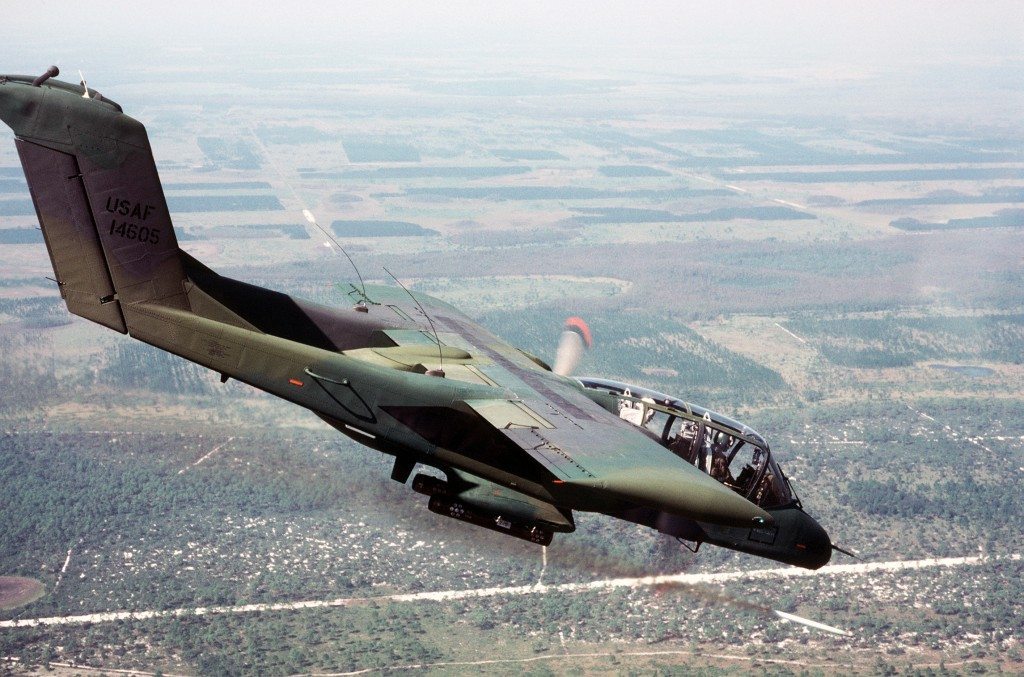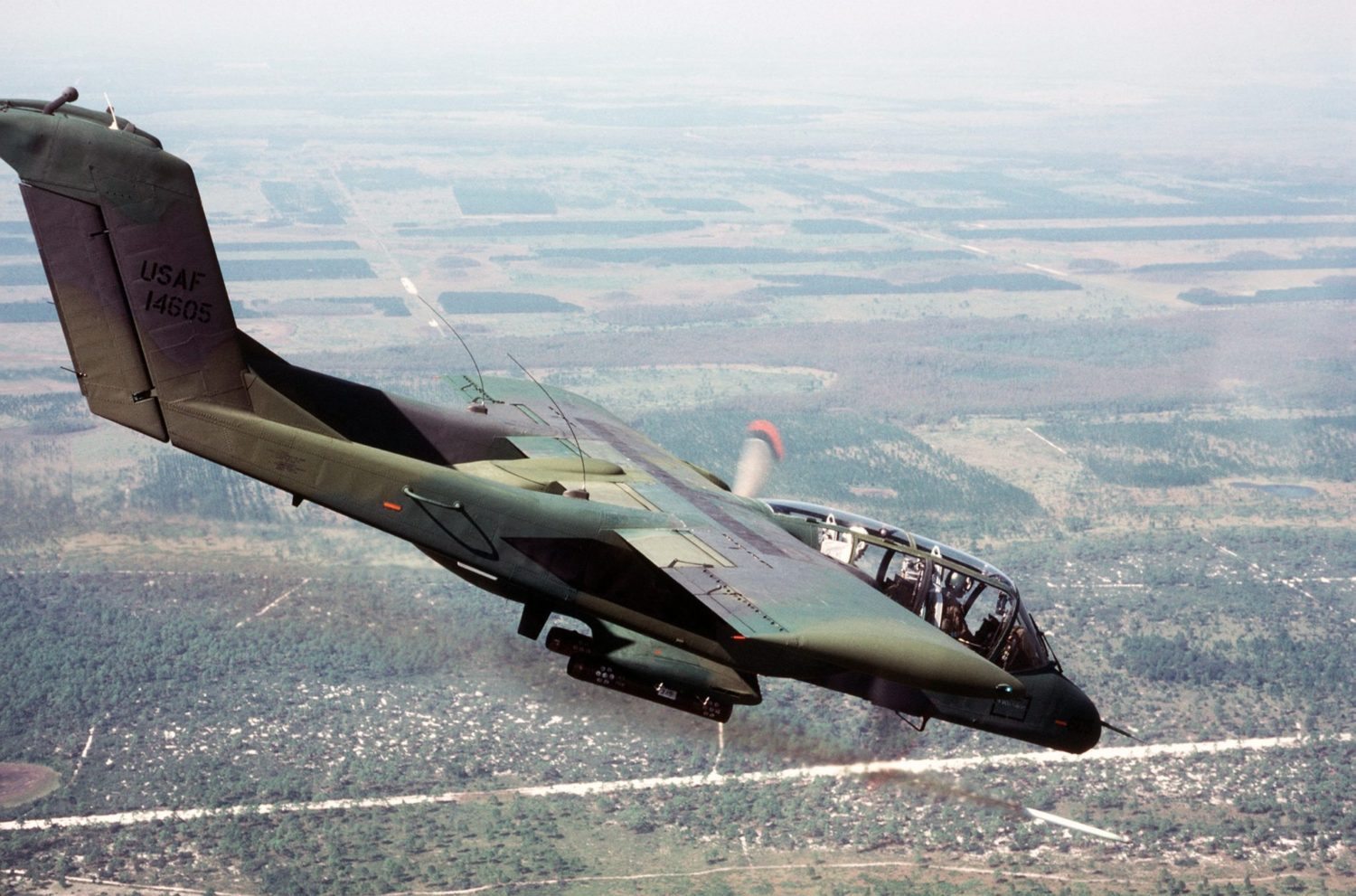
Special Operations Command recently experimented using two OV10 light observation/utility aircraft in the close air support role in combat against ISIS. This incident has made a small splash in various forums and a discussion of the Air Force obtaining prop engine type light aircraft to do CAS especially with the venerable A-10 being constantly offered on the Air Force’s “constructed” altar of financial sacrifice. The Air Force will never willingly purchase a CAS specific aircraft and even more importantly not use it like SOCOM has used the OV10 or the Embraer A-29 Super Tucano which SOCOM looked at in an identical role in Afghanistan.
The OV-10’s were flown by naval aviators completing 134 sorties over 82 days last May. The OV-10 can deliver a wide variety and impressive amount of ordnance for its comparatively small size. It has a fascinating history and distinguished record flying for the Air Force, Navy and Marines starting in the mid 60’s The Marines were the last service to fly it and retired the plane in 1995.
The latest test was explained as an experiment to see if the OV10 could accomplish CAS missions at a lower cost than current front line fighters like the F16 and F15. A similar experiment called Imminent Fury was conducted from 2009-2010 in response to a request by Navy Special Warfare operators for a light attack plane with intelligence, surveillance and recon (ISR) capabilities to support their missions. The Navy secured an Embraer A-29 Super Tucano to test and the Air Force requested to join in the experiment and increase the number of aircraft. The experiment was promptly ended with General McCrystal’s relief in 2010.
Why would the military constantly repeat these experiments? The OV10’s history itself is an effort to provide responsive CAS to ground forces and in that concept lays the kernel of truth that explains the phenomenon. There is no doubt there is a requirement for extremely responsive ground commander directed CAS which is why we keep having tests.
Simply put, the Air Force doesn’t like the CAS mission. At the cultural level it sees the mission as undermining its relatively recent establishment as a separate service. Supporting the ground commander especially in a direct role is seen as somewhat demeaning. This explains why the current system of CAS requires the ground commander to extrapolate how much air support he will need 48 hours before it’s needed so the Air Force can provide it. Except for special ops, fixed wing CAS aircraft are rarely dedicated to a specific unit/commander or mission before taking off. The Air Force participates in CAS primarily to keep other branches from developing an independent capability to do it. Other branches developing CAS capabilities are seen as efforts by the Air Force as efforts that threaten its primary mission of providing airpower and existence as a separate service.
The Air Force’s adoption of light CAS aircraft will only happen should another branch commit to that course of action. This is very similar to what happened when the Army developed a requirement for a light cargo aircraft that would be dedicated to provide local immediate support to the ground commander. As the Army experimented the Air Force requested to be part of the experiment and then promised to operate the aircraft (the C27J) for the ground commander in that role. After securing all the aircraft including the ones the Army bought, the Air Force mothballed the fleet and promised to do the mission with C30’s. An aircraft the Air Force said was unsatisfactory for the mission to procure the C27J.
So, we can all get excited when we see CAS specific aircraft doing the CAS mission but rest assured those aircraft and efforts are flashes in the pan especially if the Air Force is involved in the effort. Now you understand the forces at work behind the scenes.

